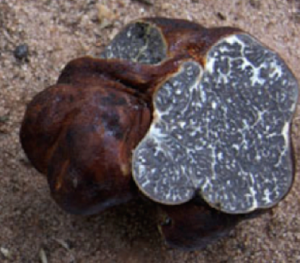All About Truffles
Truffles are the fruiting bodies of fungi that grow belowground and in association with trees.
Many truffles have profound and unique aromas, and are cultivated and much sought after for gastronomy.
Truffles are iconic fungi that significantly impact regional economies and contribute to the cultural and social identity (e.g., the French Black Perigord, the Italian White Truffle). The US Census Bureau data indicate that in 2021, the US imported 49 tons of truffles worth $26.7 million.
Truffle fungi form mutualistic relations with tree roots – called ectomycorrhizal symbioses. The truffle obtain carbohydrate food from the plants, and in return provide plants with water and nutrients mined from the soil, improving plant health and resilence.
Truffles grow naturally in forests and some species can be cultivated in tree plantations. Truffles are arguably one of the most highly prized specialty crops in the world.
In many ways, truffles are the ultimate specialty crop:
(1) Truffles command a high market value;
(2) Truffle growth and consumption is compatible with and beneficial to other agricultural commodities and production systems;
(3) Once established, truffle production can persist for decades sequestering carbon and benefiting rural economies.


